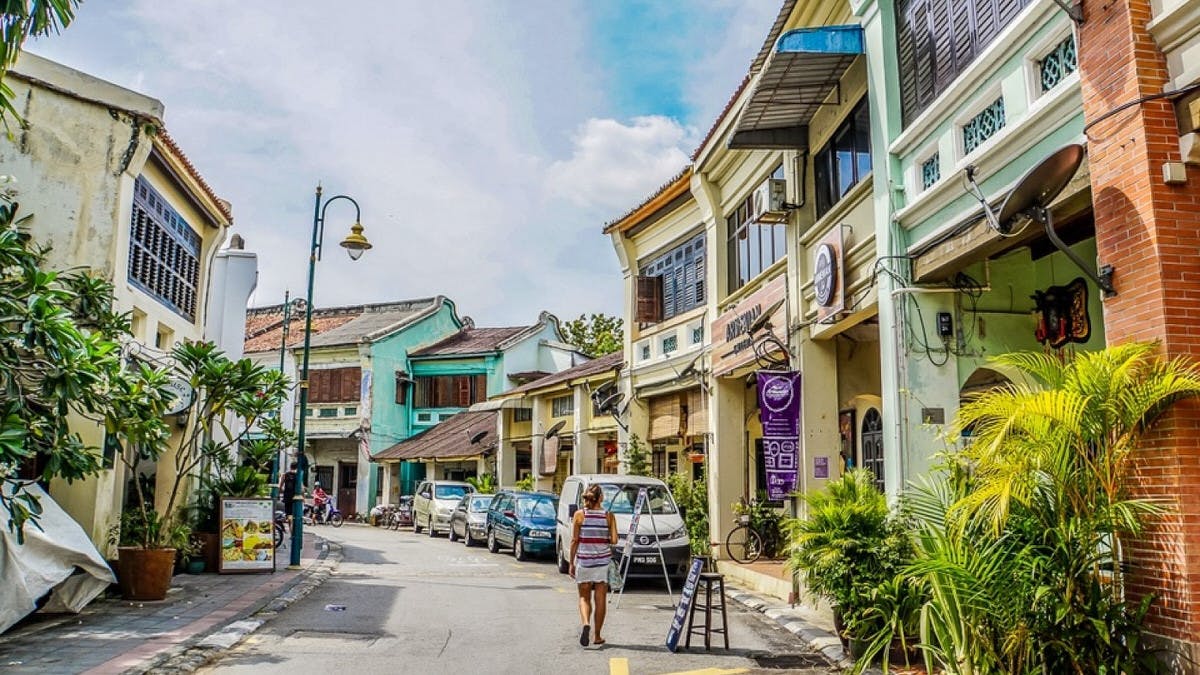Basic Information
Regional
Penang was part of the Malay sultanate of Kedah until 1786, when Captain Francis Light built a fort at the site of present-day George Town and get the island ceded to the British East India Company. Along with Malacca and Singapore, Penang island was one of the three British Straits Settlements.
Penang comes from the Malay word Pinang, the betel nut (槟榔)tree (Areca catechu). Pulau Pinang translated literally from Malay, means "betel nut island." The original name of Penang was Pulau Ka-Satu or "First Island," renamed Prince of Wales Island on August 12, 1786, to commemorate the birthday of the Prince of Wales, later George IV. During the early and middle part of the last century, Penang Island was also known as "The Pearl of the Orient."
The state of Penang is made up of two parts, Penang Island, a turtle-shaped island in the Straits of Malacca 8km west of Peninsular Malaysia, and Seberang Perai (formerly Province Wellesley), a rectangular-shaped district that is situated on Peninsular Malaysia. The capital city, George Town, was named after King George III of Great Britain.
Since the 20th century, pepper, tin, and rubber have become the leading merchandise. Penang grew to become the Silicon Valley of the East over the past decades, owing to its solid and vibrant electrical and electronics (E&E) ecosystem, which has evolved from labor-intensive and low value-added to capital-intensive, knowledge-based, knowledge-based, and high-technology. Especially in the Bayan Lepas Free Industrial Zone and Batu Kawan Industrial Park, one can find a lot of well-known multinational corporations (MNCs) of automotive, industrial, aerospace, and medical devices, creating opportunities for other mid- and downstream players, as well as local companies that provide supporting activities.
At the World Heritage Committee Session in July 2008, George Town and Malacca were listed as UNESCO World Heritage Sites. As a multicultural destination, it is challenging to define Penang in just one word. Knowing the local culture beforehand will help you understand Penang better.
### Population
Penang has 1.77 million people (2020, DOSM), more than half of whom live on the Seberang Prai. The population is multi-racial, young, and equally distributed between males and females. The ethnic breakdown is as follows: Malay 44.4 percent, Chinese 39.1 percent, Indian 9.4 percent, and others 7.1 percent (2021, Penang Institute).
### Religion
The official state religion is Islam, but freedom of worship is observed. Buddhism, Christianity, Hinduism, Sikhism, Taoism, and other religions are freely practiced – Muslim mosques, Buddhist and Hindu temples, and Christian churches are commonly found throughout Penang. Visitors can expect to be amazed by the diversity and profusion of festivals and other religious celebrations which occur regularly throughout the year.
### Languages
The official language of Malaysia is Malay, but many locals are also proficient in English. Most Penangites are competent in more than two languages. Many locals speak “Manglish,” (Malaysian-English), an English-based creole with the grammar structure of the Chinese Hokkien dialect, which is unique because of the blend of Chinese with many "adopted" Malay and English words. This might not sound like English to visitors, which can lead to confusion. Listen for "lah:" appending a "lah" to the end of sentences for emphasis is a hallmark of Manglish.
Most signages are written in Malay and English, with some in Chinese. Names of roads and main destinations are in Malay as well. It would be helpful to know some basic Malay, although English is widely spoken in many areas.
### Calendar
With four major religions represented—Islam, Buddhism, Hinduism, and Christianity—there is a high chance that public holidays and festivals will influence your travel experience. The best time to catch a festival (and the worst time to get anything administrative done) is autumn, when Penang celebrates Muharram, Diwali, and the Chinese Nine Emperor Gods Festival. Make sure to check the Malaysian calendar before planning your trip.
### Attire
Depending on the activity. Generally, you can't go wrong with clothes made of light cotton or other moisture-absorbing fabric. Swimwear, sunglasses, and sunblock will come in handy for days on the beach. Flip flops and strappy sandals are the most comfortable footwear for walking and sightseeing. Don't bother with socks unless you can afford to launder your clothes daily. When visiting a classy establishment in Penang, you may want to adhere to the dress code.
Please note that there are no nude beaches in Penang. Public nudity, in general, is frowned upon by the locals.
### Payments
As the use of digital payment services continues to gain traction, cash is still king in Penang, especially outside of George Town. Most of the best places to eat are usually no-frills—where you stand with your bowl in a crowded back alley—so keep a wad of small bills. Don’t expect street food stalls, hawker centers, or someone selling coconuts on the five-foot way to accept a credit card. ATMs and money changers are easy to find, even in remote areas.
### Fares for visitors
In Penang, quite many attractions offer subsidized fare for local Malaysians. Visitors may notice the word "MyKad" stated on some ticketing boards. MyKad refers to the Malaysian national identity card, where statements stating "Price for MyKad holders" refer to prices applicable to Malaysian nationals. Ticketing information and entrance fees are usually displayed to avoid confusion. When prices are not stated, please remember to check before proceeding.
### Dining etiquette
Some cultures are more formal than others. Knowing the proper customs before you head to dinner is always good. At a Malay or Indian *warung*, you might use a fork to chase bits of rice onto a spoon or use your hands to mash rice and sambal into a ball. At a Chinese restaurant, you will use chopsticks and a ceramic spoon. Being flexible, observant, and a good copycat is key to good manners.
### Tipping culture
Service charges are already included in hotels and restaurants, so additional tipping is not required. You may show gratitude for friendly service or helpful assistance by tipping a small amount of money when hospitable treatment or help is rendered.
### Things to note during Ramadan
"Ramadan" is a significant Muslim event during the ninth month of the Islamic calendar. Muslims fast daily from dawn to sunset and refrain from drinking water during this period. Out of respect for those fasting, try not to waste enormous amounts of food or behave imprudently in front of Muslims during Ramadan.
### Things to note for pedestrians
Walking around George Town is common and one of the best ways to tour this UNESCO heritage city, accessing quirky small lanes. Traffic lights and pedestrian crosswalks are available on most main streets. Pedestrians are advised to obey the pedestrian crossing lights for their safety.
---

